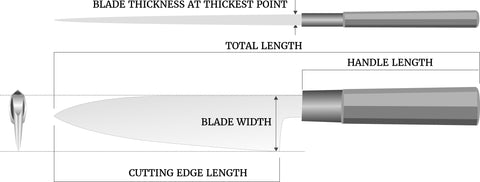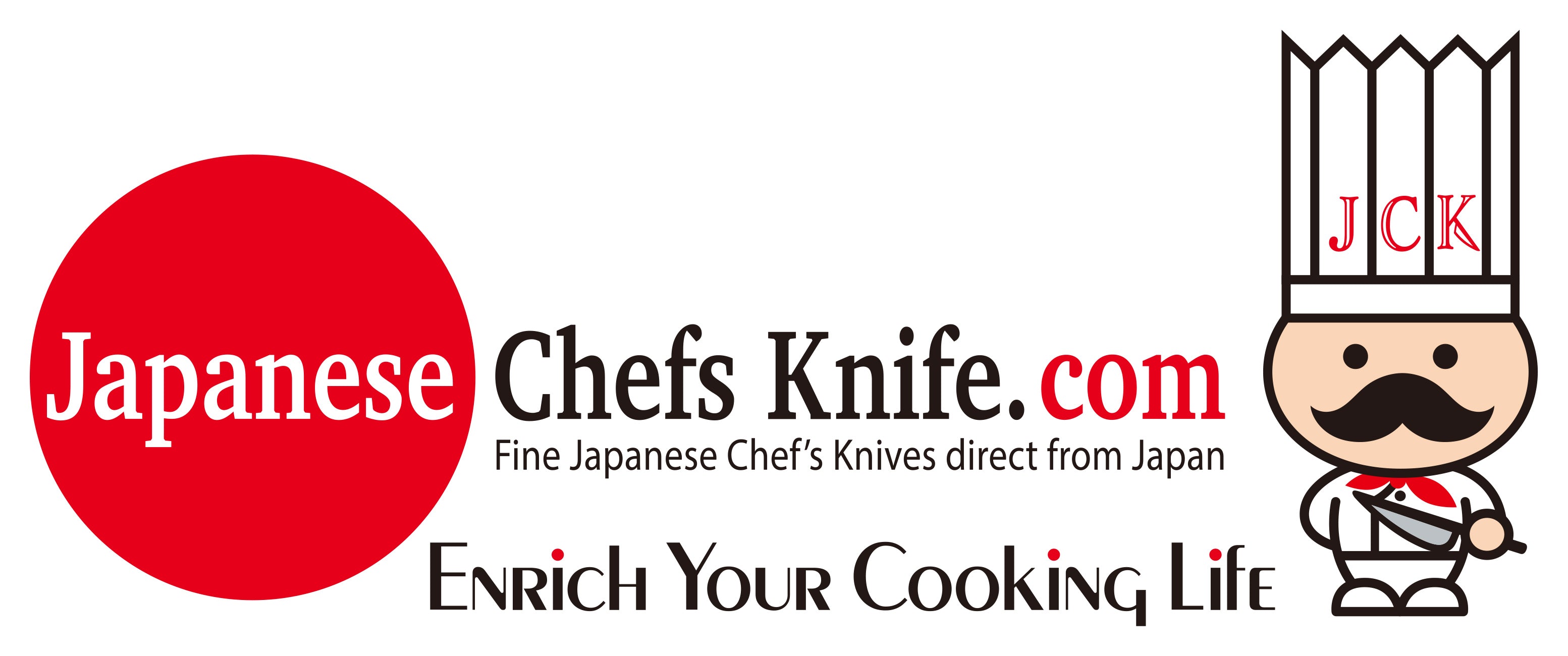We Offer DHL EXPRESS Flat Rate Shipping Worldwide. Just $10 USD for US, Canada, Australia, Asian countries. US$15 for Europe and other Countries in the world
We Offer DHL EXPRESS Flat Rate Shipping Worldwide. Just $10 USD for US, Canada, Australia, Asian countries. US$15 for Europe and other Countries in the world
SHIROU-KUNIMITSU is genuine Japanese sword smithing Mr. Komiya family in Fukuoka Prefecture (Kyushu Island) — A real family of artisans, who are devoting their life and energy to inheriting and preserving the Japanese sword making and knife making traditions that have been maintained by their family since the year 1786. Currently, a total of 4 genuine sword smiths are passionately working together to create the finest Japanese swords, and kitchen knives with outstanding cutting performance and practicality.
WABI-SABI (侘寂) is the best way to succinctly describe the characteristics of SHIRO-KUNIMITSU’s handmade, traditional hammer forged knives. WABI-SABI is a Japanese aesthetic / sensibility that suggests there is beauty within simplicity, imperfection and impermanence.
Each one of the unique Kurouchi ("Black forged") finished blades has an uneven surface and a non-uniform finish. So, if you are looking for a very neat knife, with precise details and great 'fit & finish', these Shirou-Kunimitsu handmade traditional forged knives are not well suited to your preferences. However, at the same time, we really appreciate the originality and artisanal spirit of these knives and we think the traditional Kurouchi finish is something really special — We can feel the WABI-SABI aesthetics striking at our hearts and we hope our customers will feel the same way.
To achieve the goal —Making superb, practical knives with outstanding cutting performance— Master Komiya has selected Hitachi “White Steel No. 2”, a very pure and high quality Japanese High Carbon Steel. This steel is widely used by experienced craftsmen and great forge smiths because it allows each smith to showcase how their particular forging techniques and heat treatment methods can make a difference to the sharpness, edge holding and toughness of the blade.
The Hitachi White Steel No. 2 high carbon steel blade core is sandwiched between two layers of soft iron. In addition to increasing the toughness of the blade, the soft iron also makes the blade easier to sharpen than an unlaminated, solid steel blade.
Shirou-Kunimitsu knives have a 50/50 blade grind and a simple edge shape. Each knife is carefully ground by hand and is then hand sharpened with a water-cooled whetstone wheel to create an even, natural and specially tapered 50/50 edge shape. Both sides of the blade have a SHINOGI line (The line that is created where the ground blade bevel and the blade face / side meet), below the SHINOGI you can see the expert hand grinding and hand sharpening of the specially tapered 50/50 blade bevels and the handcrafted, custom created edge shape.
Since there is no secondary bevel or micro-bevel, we found the simple bevel geometry of these knives was very easy to hand sharpen with a whetstones and the 50/50 blade bevels naturally guided us to create an outstandingly sharp edge. The cutting performance of the knife also impressed us and we could feel it cut deeply in to the foods that we tested. We noted that while these knives might appear to be a simple and rustic looking, they are actually very sophisticated, very practical and thoughtfully designed products — Products that could only be made by an experienced, sophisticated forge smith.
This Nakiri Knife comes with a classic Octagonal Japanese Magnolia Wood Wa Handle, which has a Water Buffalo Horn Ferrule.
The Nakiri is a double bevel edged knife that is rectangular in profile and has a tall, thin blade. It is popular throughout Japan and is often used by home cooks for quickly and efficiently chopping, slicing or mincing vegetables and fruit. It is becoming increasingly popular with vegetarians.
A Note About Sharpening Shiro-Kunimitsu Knives: Please do not add a micro-bevel, as this can lead to micro-chipping of the already fine, sharp cutting edge. To maintain the flat factory bevel and bevel angle, we recommend placing the whole bevel flat on the whetstone and applying finger pressure between the cutting edge and Shinogi (The line formed by the bevel and main blade face / cheek) during each sharpening stroke. Please use the same number of sharpening strokes on each side of the knife and de-burr the wire-edge using very light finger pressure, alternating between bevels every few strokes until it is removed.
Knife Model: Shirou-Kunimitsu White Steel No.2 Kurouchi Nakiri
Blade Material: White Steel No.2
Rockwell Hardness (HRc): 60 to 62
Blade Grind and Edge Shape: Double Bevel Edge 50/50
Handle Material: Octagonal Magnolia Wood Handle with Water Buffalo Ferrules
Saya Included: No.
| Nakiri165mm (6.4") Cutting edge length: 165mm Total Length: 315mm Blade Thickness: 3.1mm Blade Width: 52mm Handle Length: 129mm Total Weight: 166g |

This knife comes with 50/50 double bevel edge geometry for both right and left handed use.
For your information, Japanese Kitchen knives are generally designed for right hand use with a slightly thicker and rounded grinding on the right side blade and a less rounded (almost straight flat) grinding on the left side blade. However, both right and left hander can use the knives that have double bevel edge sharpened 50/50 without problems.
We believe the quality and cutting performance of Japanese knives are the best in the world, and hope you enjoy the fine craftsmanship and its sharp edge of your new knife. With proper cares, every Japanese knife should be your special cooking partner for a long times.
Important
This is the Carbon steel blade kitchen knife that can get rust and discolor easily, and requires extra cares and attentions to prevent rust.
